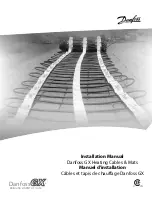
12
C O N T R O L S T A T I O N W I R I N G
To prevent possible SERIOUS INJURY or DEATH, install
reversing sensors when the 3-button control station is out of
sight of the door or ANY other control (automatic or manual) is
used. Reversing devices are recommended for ALL
installations.
ATTENTION
AVERTISSEMENT
AVERTISSEMENT
AVERTISSEMENT
WARNING
WARNING
CAUTION
WARNING
WARNING
PRECAUCIÓN
ADVERTENCIA
ADVERTENCIA
ADVERTENCIA
RADIO CONTROLS
On all models with type B2 control wiring, a terminal bracket
marked R1 R2 R3 is located on the outside of the electrical
enclosure. All standard radio control receivers (single channel
residential type) may be mounted to this bracket. The operator
will then open a fully closed door, close a fully open door, and
reverse a closing door from the radio transmitter. However, for
complete door control from a transmitter, a commercial
three-channel radio set (with connections for OPEN/CLOSE/STOP)
is recommended.
ADDITIONAL ACCESS CONTROL EQUIPMENT
Locate any additional access control equipment as desired (but
so that the door will be in clear sight of the person operating the
equipment), and connect to the terminal block in the electrical
enclosure as shown on the FIELD WIRING CONNECTIONS
diagram. Any control with a normally (N.O.) isolated output
contact may be connected in parallel with the OPEN button. More
than one device may be connected in this manner. Use 16 gauge
wire or larger for all controls. Do not use the control circuit
transformer (24Vac) in the operator to power any access control
equipment other than a standard residential type radio receiver.
EXTERNAL INTERLOCK SWITCH
The operator has a terminal connection for an external interlock
switch. This switch must be a normally closed (N.C.) two-wire
device with a contact rating of at least 3 amps @ 24Vac. When
such a switch is connected as shown on the FIELD WIRING
CONNECTIONS diagram, the control circuit will be disabled when
the switch is actuated, thereby preventing electrical operation of
the door from the control devices.
Summary of Contents for MT
Page 22: ...22 O P E R A T O R N O T E S ...
Page 23: ...23 O P E R A T O R N O T E S ...











































